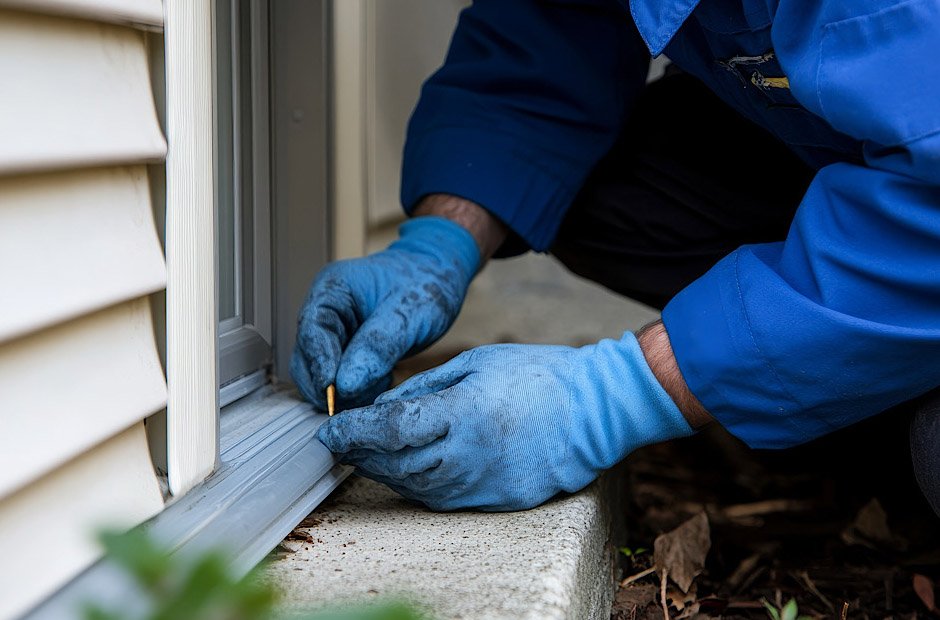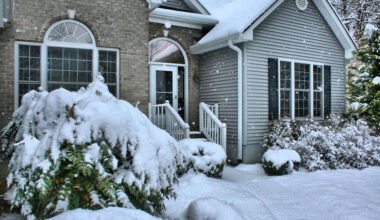When temperatures drop, humans aren’t the only ones looking for a warm place to spend the winter. Pests that have been living comfortably outside all summer suddenly start eyeing your home as their next shelter. The problem is, most homeowners don’t realize just how many unwanted guests are trying to move in until they’ve already settled into the walls, attic, or basement.
Why Cold Weather Creates a Pest Crisis
Here’s the thing: pests are surprisingly good at sensing when conditions outside are about to become unbearable. Mice and rats, in particular, start scouting for indoor locations well before the first hard freeze. They’re not just looking for warmth either. Your home offers everything they need to survive: stable temperatures, protection from predators, and usually plenty of food sources they can access.
The shift happens gradually at first. As fall temperatures begin to cool down, pest activity near homes increases. Rodents start testing entry points, looking for any gap or crack they can squeeze through. A mouse only needs an opening about the size of a dime to get inside. Rats need slightly more space, but not much. By the time winter actually arrives, the pests that are going to get in have usually already found their way inside.
Mice and Rats Lead the Winter Invasion
Rodents are by far the most common winter pest problem. They’re incredibly motivated to find indoor shelter because they simply can’t survive extended periods in freezing temperatures without a reliable food source. Once inside, they waste no time making themselves at home.
Mice typically enter through foundation cracks, gaps around pipes and wires, damaged weather stripping, or openings where utility lines enter the house. They’re excellent climbers too, so upper-level entry points aren’t safe either. Once a mouse finds a good spot, it’ll create a nest using whatever materials it can shred: insulation, paper, fabric, even electrical wiring.
The reproductive rate is what turns a small problem into a major infestation. A single female mouse can have five to ten litters per year, with each litter containing five to six babies. Those babies reach reproductive age in just six weeks. Do the math and it becomes clear why addressing rodent problems quickly matters so much.
Rats follow similar patterns but cause even more damage due to their size. They chew through more substantial materials and leave larger droppings throughout the areas they inhabit. Both mice and rats carry diseases and parasites that can affect humans and pets. Their urine and droppings contaminate surfaces, and their constant gnawing on wires creates fire hazards.
Many homeowners dealing with rodent activity during winter months turn to professional services for mouse pest control because DIY methods often only address part of the problem. Catching or poisoning a few mice doesn’t solve the issue if more keep getting in through unsealed entry points.
Other Pests That Move Indoors
While rodents get most of the attention, they’re not the only pests seeking winter refuge. Spiders become more visible indoors during cold months, though many of them were actually already inside. They just become more noticeable as they search for prey that has also moved indoors.
Cockroaches absolutely hate the cold. German cockroaches, in particular, need warm environments to survive and reproduce. They’ll squeeze into the tiniest cracks to access heated spaces. Once inside, they typically settle near water sources: kitchens, bathrooms, laundry rooms and cold rooms in the Philippines. These pests multiply quickly and are notoriously difficult to eliminate once established.
Stink bugs are another cold-weather nuisance. They congregate on the warm, sunny sides of buildings during fall and work their way inside through any available opening. Once inside walls or attics, they go dormant until spring. The problem is that warm spells or indoor heat can wake them up prematurely, causing them to emerge inside living spaces.
Boxelder bugs follow similar patterns. They’re mostly harmless but gather in huge numbers on building exteriors before finding ways inside. Lady beetles do the same thing. While these insects don’t cause structural damage, having hundreds of them suddenly appear inside your home on a warm winter day is deeply unpleasant.
The Entry Points You’re Probably Missing
Most homes have way more potential entry points than owners realize. Gaps around windows and doors are obvious, but there are dozens of other spots pests exploit. Dryer vents without proper screens are like open doors for rodents. Chimney gaps, damaged roof vents, and loose soffit panels all provide access.
Foundation cracks are particularly problematic. Even small cracks can allow pest entry, and these often expand during freeze-thaw cycles. Gaps where utilities enter the building, like cable lines, phone lines, water pipes, and gas lines, frequently have spaces around them that were never properly sealed.
Garages and basements often have the most vulnerabilities. Garage doors rarely seal perfectly at the bottom, creating a gap that mice can easily slip under. Basement window wells collect debris and provide sheltered spots where pests can work on finding entry points without being disturbed.
Prevention That Actually Works
The most effective approach to winter pest problems is blocking access before cold weather forces pests to start looking for shelter. This means doing exterior inspections and repairs during late summer or early fall.
Seal every crack and gap in the foundation with appropriate materials. Silicone caulk works for small cracks, while larger gaps need wire mesh or metal flashing before sealing. Check that all window and door weather stripping is intact and creates a tight seal. Replace any damaged screens on windows, vents, or crawl space openings.
Install door sweeps on exterior doors, especially garage doors. These inexpensive additions block the gaps at the bottom of doors where pests frequently enter. Make sure downspouts direct water away from the foundation, as moisture problems attract pests and can create new cracks over time.
Trim tree branches and shrubs away from the house exterior. Rodents and other pests use overhanging branches as highways to access roofs and upper levels. Keep firewood stored at least 20 feet from the house, as woodpiles attract rodents and insects that then migrate to the nearby structure.
Inside the home, reducing food sources and clutter helps discourage pests that do get in from staying. Store dry goods in sealed containers rather than original packaging. Clean up spills and crumbs promptly. Fix any leaky pipes or faucets, since water sources attract pests just as much as food does.
When Prevention Isn’t Enough
Sometimes despite best efforts, pests still find their way inside. This is especially true in older homes with numerous small gaps and cracks that are difficult to locate and seal completely. When an active infestation develops, the situation usually requires more than basic prevention measures.
Rodent infestations in particular need comprehensive solutions that address both the existing population and the reasons they got inside in the first place. Eliminating the current mice or rats without sealing entry points just means new ones will move in to replace them. Similarly, sealing entries without dealing with the existing population leaves pests trapped inside where they’ll continue causing damage.
The key is catching problems early. That scratching sound in the walls at night or those small droppings in the back of a cabinet are signs that need immediate attention. Winter pest problems don’t improve on their own, they just get worse as populations grow and damage accumulates. Taking action at the first sign of pest activity prevents minor issues from becoming major ones that require extensive remediation.



